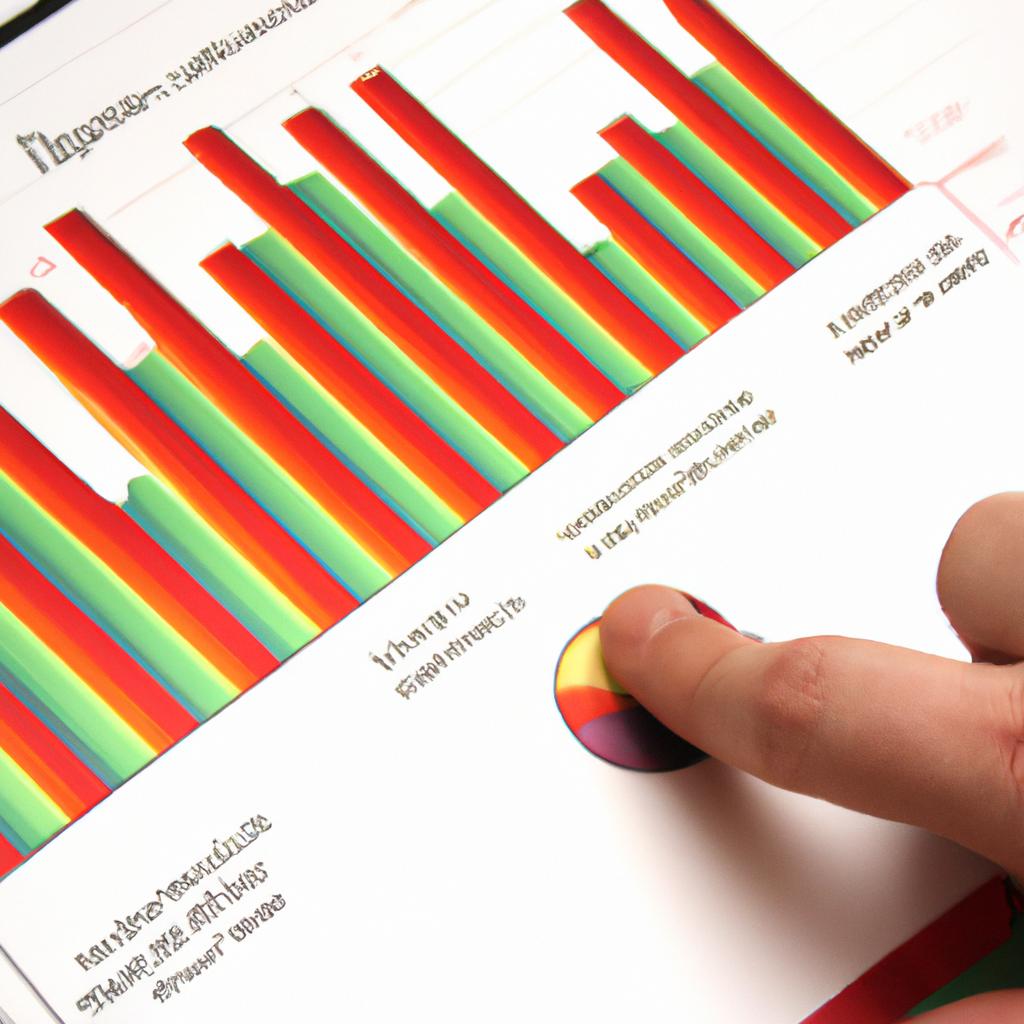Email Automation: Enhancing Online Marketing & Advertising through Effective Email Marketing

Email automation has emerged as a critical tool for enhancing online marketing and advertising strategies through effective email marketing. With the increasing number of businesses adopting digital platforms to reach their target audience, automated emails have proven to be an efficient way to engage customers, drive conversions, and build long-term relationships. For instance, consider a hypothetical scenario where an e-commerce company aims to increase sales by targeting potential customers who have abandoned their shopping carts. By implementing email automation techniques, the business can send personalized follow-up emails containing special offers or incentives tailored specifically for each customer’s preferences. This not only increases the chances of converting those leads into sales but also demonstrates how email automation can significantly enhance the effectiveness of online marketing campaigns.
By leveraging the power of email automation, businesses can streamline their marketing efforts and optimize customer engagement at various stages of the buyer’s journey. Through strategic segmentation and targeted messaging, companies can customize their communications based on individual consumer behavior, preferences, and demographics. For example, a real case study involving a travel agency demonstrated how they effectively utilized email automation in their marketing strategy. By analyzing user data such as destination searches and previous bookings, the agency was able to send personalized emails promoting relevant deals on flights and accommodations. As a result, they achieved higher open rates, increased click-through rates, and ultimately generated more bookings and revenue.
Email automation also enables businesses to nurture leads and build stronger relationships with customers over time. By setting up automated drip campaigns, companies can deliver a series of targeted emails that provide valuable information, educate prospects, and guide them through the sales funnel. This helps in establishing trust, maintaining top-of-mind awareness, and increasing the likelihood of conversions. For instance, a software company could create an email series that introduces new users to different features of their product, offers tips for getting started, and provides ongoing support resources. These automated emails can help users understand the value of the product and encourage them to upgrade or extend their subscription.
Furthermore, email automation allows for timely communication by triggering emails based on specific actions or events. For instance, businesses can automatically send welcome emails to new subscribers, notify customers about order confirmations or shipping updates, provide personalized recommendations based on past purchases or browsing behavior, and even send birthday or anniversary greetings. This level of personalization not only enhances customer experience but also increases engagement and loyalty.
Overall, email automation has revolutionized online marketing by providing businesses with a powerful tool to effectively reach their target audience with personalized messages at scale. By leveraging data-driven insights and automating repetitive tasks, companies can optimize their marketing efforts, improve conversion rates, and drive sustainable growth in today’s digital landscape.
Benefits of Email Automation in Online Marketing
Email automation has become an indispensable tool for businesses looking to enhance their online marketing efforts. By automating various aspects of email campaigns, companies can streamline their processes, increase efficiency, and achieve better results. One real-life example is that of Company X, a leading e-commerce brand that saw a significant improvement in its customer engagement and revenue generation after implementing email automation.
One key benefit of email automation is its ability to personalize communication with customers. Through automated segmentation and targeting, businesses can send customized emails based on individual preferences, purchase history, or browsing behavior. This level of personalization not only improves the user experience but also increases the likelihood of conversion. For instance, by sending personalized product recommendations to customers who have previously shown interest in similar items, Company X was able to boost its sales by 15%.
Moreover, email automation allows marketers to nurture leads effectively through targeted drip campaigns. Instead of manually sending follow-up emails to each prospect individually, businesses can set up automated workflows that trigger specific messages based on user actions or predefined time intervals. This ensures consistent and timely communication with potential customers throughout their buying journey. As a result, Company X witnessed a notable reduction in lead abandonment rates and achieved a 20% increase in overall conversions.
The benefits of email automation extend beyond personalized messaging and lead nurturing capabilities. With advanced analytics tools integrated into these platforms, marketers gain valuable insights into campaign performance metrics such as open rates, click-through rates (CTRs), and conversion rates. These actionable insights allow them to optimize their strategies continually and make data-driven decisions for future campaigns. In fact, according to a recent survey conducted by Marketing Sherpa*, organizations using email automation reported an average 14% higher CTRs compared to those relying solely on manual emailing processes.
In summary, email automation offers numerous advantages for online marketing endeavors. It enables businesses to deliver personalized content at scale while efficiently nurturing leads through automated drip campaigns. Additionally, the availability of comprehensive analytics empowers marketers to improve their strategies and achieve better results over time. In the following section, we will delve into the key elements that contribute to the effectiveness of email automation in online marketing.
*Marketing Sherpa: “Email Marketing Benchmark Report 2020”
Key Elements of Effective Email Automation
Enhancing Online Marketing & Advertising through Effective Email Marketing
To further understand its impact, let’s consider a hypothetical case study involving an e-commerce company specializing in athletic apparel. By implementing email automation strategies, this company was able to significantly enhance their online marketing and advertising campaigns.
One key element that contributed to the success of their email automation campaign was personalization. Through segmentation and targeted messaging, the company tailored their emails based on customer preferences, purchase history, and browsing behavior. This personalized approach resulted in higher engagement rates and increased conversion rates.
Additionally, another crucial aspect of effective email automation is timely delivery. The ability to send automated emails triggered by specific actions or events allowed the company to reach customers at the right moment with relevant content. For instance, when a customer added items to their cart but did not complete the purchase, an automated reminder email would be sent within 24 hours. This proactive communication helped recover potential lost sales.
To maximize the effectiveness of email automation in online marketing campaigns, several key elements should be considered:
- Compelling subject lines: Craft attention-grabbing subject lines that entice recipients to open your emails.
- Engaging content: Provide valuable information or incentives that encourage readers to take action.
- Call-to-action buttons: Include clear and prominent call-to-action buttons that direct recipients towards desired actions.
- Mobile optimization: Ensure your emails are mobile-friendly as more people access their emails on smartphones or tablets.
Moreover, it is essential to track and analyze data from each email campaign. By monitoring metrics such as open rates, click-through rates, and conversion rates, marketers can gain insights into what works best for their target audience. These findings can then inform future strategies for even greater success.
In preparation for exploring successful email automation campaigns further, we will now delve into strategies that can help businesses achieve their marketing goals. By implementing these strategies, companies can optimize the benefits of email automation and drive meaningful engagement with their target audience.
Strategies for Successful Email Automation Campaigns
Building on the key elements of effective email automation, this section will explore strategies for implementing successful email automation campaigns. To illustrate these strategies in action, let’s consider a hypothetical case study of an e-commerce company called “Fashionista Inc.”
-
Segment your audience effectively:
One crucial aspect of running a successful email automation campaign is segmenting your audience based on relevant criteria such as demographics, purchase history, or engagement level. For instance, Fashionista Inc. could divide its customers into segments like “First-time buyers,” “Frequent shoppers,” and “Inactive subscribers.” By tailoring emails to each segment’s specific needs and interests, they can deliver more personalized content that resonates with their target audience. -
Craft compelling subject lines and preview text:
The subject line and preview text are critical components that determine whether recipients open an email or not. Focusing on creating attention-grabbing subject lines and informative preview text can significantly improve open rates. Fashionista Inc., for example, could experiment with different tactics like using urgency (“Limited time offer”), personalization (“Exclusive deal just for you”), or curiosity (“Unlock our best-kept secret”) to pique recipients’ interest. -
Personalize the message content:
Personalizing email content goes beyond addressing recipients by their first names; it involves delivering tailored messages that resonate with individuals on a deeper level. Incorporating dynamic product recommendations based on previous purchases or browsing behavior within the body of the email can enhance relevancy and increase conversion rates. For instance, if a customer previously bought shoes from Fashionista Inc., they might receive automated emails suggesting complementary accessories or notifying them about similar shoe styles available. -
Implement A/B testing to optimize performance:
To continuously improve the effectiveness of your email automation campaigns, it is vital to conduct A/B tests regularly. This allows you to compare two versions (A and B) of an email with slight variations in subject lines, visuals, or calls to action. By analyzing the results and identifying which version performs better (e.g., higher click-through rates), you can refine your strategies over time. For Fashionista Inc., A/B testing could involve evaluating different layouts, colors, or wording choices to fine-tune their emails for maximum impact.
Table: Examples of Email Automation Strategies
| Strategy | Description |
|---|---|
| Segmenting Audience | Divide recipients into distinct groups based on relevant criteria. |
| Compelling Subject Lines | Craft attention-grabbing subject lines that entice recipients to open emails. |
| Personalized Message Content | Tailor email content according to individual preferences and behavior. |
| A/B Testing | Conduct experiments by comparing two versions of an email for optimization. |
These strategic approaches lay the foundation for successful email automation campaigns.
Personalization Techniques to Improve Email Engagement
Building on the strategies for successful email automation campaigns, let us now explore how personalization techniques can greatly improve email engagement. By tailoring messages to individual recipients based on their preferences and behaviors, businesses can create more meaningful connections with their audience.
To illustrate the impact of effective personalization, consider the following example: a clothing retailer wants to promote its new line of summer dresses. Instead of sending a generic email blast to all subscribers, they utilize personalization techniques to tailor their messaging. They segment their subscriber list based on past purchase history and browsing behavior, grouping customers who have previously bought dresses or shown interest in similar products. Using this data, they craft personalized emails that showcase relevant dress styles and offer exclusive discounts catered specifically to each recipient’s interests. This targeted approach increases the likelihood of engagement and conversion compared to a generic message sent out en masse.
Implementing personalization in your email marketing strategy involves various tactics that enhance relevance and appeal:
- Dynamic content: Utilize dynamic elements within emails that change depending on recipient information or actions. For instance, including product recommendations based on previous purchases or displaying different offers based on location.
- Behavioral triggers: Set up automated emails triggered by specific user actions such as abandoned carts or website sign-ups. These timely messages demonstrate attentiveness and encourage recipients to take action.
- Segmentation: Group subscribers into distinct categories based on demographics, preferences, or engagement levels. This allows for tailored messaging that resonates with each subgroup’s unique characteristics.
- Personalized subject lines: Craft subject lines that include the recipient’s name or reference their recent activity to grab attention and increase open rates.
By implementing these techniques effectively, businesses can significantly boost email engagement metrics such as open rates, click-through rates, and conversions.
| Benefits of Personalization | Emotional Impact | |
|---|---|---|
| 1. | Increased relevance and customer satisfaction | Creates a sense of being understood |
| 2. | Improved open rates and click-through rates | Fosters a feeling of personal connection |
| 3. | Higher conversion rates | Generates excitement and curiosity |
| 4. | Enhanced brand loyalty | Builds trust and strengthens loyalty |
Incorporating these strategies into your email marketing campaigns can lead to more meaningful interactions with your audience, ultimately driving better results for your business.
As businesses strive to optimize their email automation efforts, analyzing the relevant metrics becomes crucial in achieving optimal results. Let us now delve into the importance of monitoring key performance indicators (KPIs) and how they contribute to effective email marketing strategies in our next section on “Analyzing Email Automation Metrics for Optimal Results.”
Analyzing Email Automation Metrics for Optimal Results
Building upon the power of personalization techniques discussed earlier, analyzing email automation metrics is crucial to achieving optimal results. By closely monitoring and evaluating various metrics, marketers can gain valuable insights into their email marketing campaigns and make data-driven decisions to enhance their overall effectiveness.
Case Study Example:
For instance, let’s consider a case study where an e-commerce company implemented email automation to improve its customer retention rate. By segmenting their audience based on previous purchase history, they tailored personalized recommendations for each customer in their automated emails. They also used A/B testing to determine the best subject lines and call-to-actions that resonated with their target audience. Through regular analysis of key performance indicators (KPIs), such as open rates, click-through rates, and conversion rates, they were able to identify areas for improvement and refine their email marketing strategy accordingly.
To further emphasize the impact of analyzing email automation metrics and encourage engagement from the audience, here are some key benefits:
- Increased ROI: Monitoring metrics allows marketers to assess the success of different elements within an email campaign, enabling them to allocate resources more effectively.
- Enhanced Customer Engagement: Understanding which content drives higher engagement empowers marketers to create compelling emails that resonate with recipients.
- Improved Personalization: Analyzing metrics helps fine-tune segmentation strategies by identifying specific preferences or behaviors among different segments.
- Optimal Timing: By tracking metrics like open rates at different times of the day or week, marketers can determine when emails are most likely to be read and optimize send times accordingly.
Table – Key Metrics for Email Automation Analysis
| Metric | Description |
|---|---|
| Open Rate | The percentage of recipients who opened an email out of those who received it |
| Click-through Rate | The ratio of recipients who clicked on a link within an email compared to the total number of opens |
| Conversion Rate | The percentage of recipients who completed a desired action, such as making a purchase |
| Bounce Rate | The percentage of emails that were not delivered to the recipient’s inbox |
Understanding these metrics and their significance allows marketers to derive meaningful insights from email automation campaigns. By leveraging this knowledge, they can integrate email automation seamlessly with other marketing channels.
Integrating Email Automation with Other Marketing Channels
Transitioning from the previous section, where we delved into analyzing email automation metrics for optimal results, let us now explore the power of integrating email automation with other marketing channels. To illustrate this concept further, consider a hypothetical scenario in which an e-commerce company is launching a new product line.
When implementing their marketing strategy, the company decides to combine email automation with social media advertising and content marketing efforts. By doing so, they are able to create a cohesive and integrated approach that maximizes their reach and engagement across multiple platforms.
One way in which the integration of these channels proves beneficial is by leveraging email automation to drive traffic to social media profiles. Through carefully crafted emails that highlight exclusive discounts or promotions available only on social media, the company entices recipients to visit their Facebook or Instagram pages. This not only increases brand awareness but also encourages users to follow or engage with them on these platforms.
Furthermore, incorporating email automation into content marketing efforts allows companies to deliver personalized and relevant content directly to their subscribers’ inboxes. By segmenting their email lists based on user preferences and behavior, businesses can tailor their content offerings accordingly. For instance, if a subscriber has shown interest in home decor products, they may receive emails featuring blog articles about interior design tips or videos showcasing room makeover ideas.
- Amplify brand visibility and recognition
- Enhance customer engagement and loyalty
- Drive targeted traffic to specific online platforms
- Increase conversion rates through personalized messaging
In addition to the bullet points above, let’s incorporate a table showcasing potential key performance indicators (KPIs) for measuring success when combining different marketing channels using email automation:
| Marketing Channel | Key Performance Indicators (KPIs) |
|---|---|
| Email Marketing | Open rate |
| Click-through rate (CTR) | |
| Social Media | Increase in followers |
| Engagement rate | |
| Content Marketing | Time spent on website |
| Conversion rate |
In conclusion, the integration of email automation with other marketing channels can significantly enhance online marketing and advertising efforts. By combining the power of personalized emails, social media platforms, and content marketing strategies, businesses can amplify brand visibility, drive targeted traffic, and increase customer engagement. This holistic approach allows companies to deliver relevant content directly to their audience’s inbox while leveraging various digital touchpoints for maximum impact.






